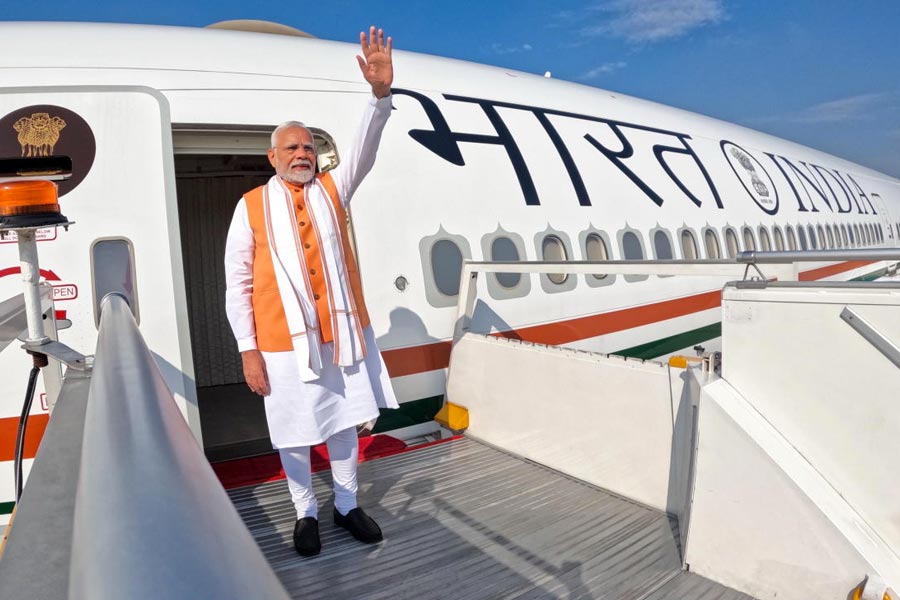New Delhi, April 11: A growl of approval is unlikely. But if everything goes according to plan, tigers can soon take the subway.
Elephants too. In fact, every non-human denizen of the wild.
The road transport and highways ministry has for the first time said it planned to construct underpasses - cave-like concrete structures - that would serve as protected corridors for animals when new stretches of national highways are laid through forests and wildlife sanctuaries.
While the well-being of animals is a key concern, there's a practical reason too: faster environmental clearances for 10 proposed highways expected to cut through several sanctuaries.
"Most developed countries have devised systems of not affecting wildlife even when roads are built through sanctuaries. For the first time, we are going to build protected corridors in India," a senior highway division official told The Telegraph.
"Creating road corridors across sanctuaries becomes inevitable in a country like ours with priorities like conservation and development," the official added. "If this works out successfully, we will make it a norm for all similar future projects."
The road ministry has written to the ministry of environment and forests and is waiting for its response.
The 10 highways are expected to cut through the Madhav National Park, the Kanha and Pench tiger reserves, all in Madhya Pradesh, and the Rajaji National Park in Uttarakhand, apart from protected forests in Assam. Officials said the cost of constructing these highways, with a total length of around 1,900km, could be nearly Rs 20,000 crore, but added that no estimate had been worked out yet for 45 proposed subways to be built beneath the highways.
The subways will add to the cost of construction, but that isn't a worry since the corridors will reduce the impact on the natural habitat of animals, an official in the National Highway Authority of India said.
The underpasses will be layered with natural soil, so that they resemble animal habitats, and fitted with surveillance cameras.
The NHAI official said stretches passing through green corridors would be fenced to stop vehicles from entering the core zone and speeds restricted to 40kmph to prevent any "accidental fatality or injuries to animals".
While there is no centralised data on such fatalities or injuries caused by road accidents, wildlife campaigners say the figure would run into a few hundred every year.
The Wildlife Institute of India and the National Tiger Conservation Authority have suggested specifications for the proposed subways. "For instance, the minimum height that has been suggested for an underpass is six metres, so that elephants can pass easily, and the minimum width 50 metres," a source said.
The response from activists was mixed. Wildlife campaigner Kartick Satyanarayan said he was happy the road ministry was thinking about the well-being of animals in their natural habitat.
"Many countries have made it mandatory to cordon off roads passing through sanctuaries. It is good India is set to join the league," Satyanarayan said, adding there should be "similar provisions" in areas where railway tracks pass through stretches with a dense wildlife population.
But an Uttarakhand-based animal rights activist didn't seem very impressed. "Animals in sanctuaries are already facing problems because of excessive human interference, traffic and illegal grazing by village cattle from peripheral areas," the activist, who didn't want to be named, said. "In such a situation, highways should go around sanctuaries rather than through sanctuaries."










